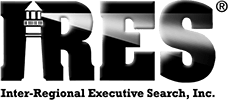Nearly every week a company president or hiring executive asks us if we use any form of psychological or psychometric “evaluation test”.
Conversely, I’ve witnessed test-takers who knocked themselves out of contention by trying to “guess” the correct answer — which backfired resulting in incorrect results. Even though they were ideally suited for the positions they were applying for.
Then there’s the nagging issue of the well documented, psychological phenomenon that stipulates when someone is aware of being “tested” the outcome is affected by the very awareness itself. For those of you that took a psych 101 or 202 course (All your HR managers should be in this group) this is known as the “Hawthorne Effect”.
When it comes to “fill-in-the-choice” tests I believe we have at least three conditions stacked against us, a) A savvy test taker can goose the desired outcome, b) Someone who thinks they’re savvy inadvertently harms their test score by their incorrect attempt to goose (or guess), and c) The psychological phenomenon known as the Hawthorne Effect.
Over the years IRES developed a 21 point system of such “real life” situations that are inter-woven into the interview process itself. While this may stretch the interview process by 7-10 days (a fact we make client officials well aware of), we feel results lead to more reliable behavioral feedback than any essay or “fill-in-the-circle” type of test.
This doesn’t mean all fill-in-the-blank or online profile tests are useless. No, they do have merit. We simply feel real life interactive situations are more reliable than a test taken in locked room for one hour.
Contributed to by Frank G. Risalvato, CPC
President, IRES, Inc.

